Optimizing Foamed Bitumen Mixtures: AI-Based Determination of Ideal RAP and FBC Percentages Using HWTT and ITS Data
Abstract
1. Introduction
2. Materials and Methods
2.1. Determination of Aggregate Gradation
2.2. Bitumen Type
2.3. Mix Design
2.4. HWTT
2.5. Indirect Tensile Strength
3. Machine Learning Model
4. Results and Discussion
4.1. Model Validation and Optimization
4.2. Model Results
5. Conclusions
Author Contributions
Funding
Institutional Review Board Statement
Informed Consent Statement
Data Availability Statement
Conflicts of Interest
References
- Sánchez, D.B.; Airey, G.; Caro, S.; Grenfell, J. Effect of foaming technique and mixing temperature on the rheological characteristics of fine RAP-foamed bitumen mixtures. Road Mater. Pavement Des. 2020, 21, 2143–2159. [Google Scholar] [CrossRef]
- Mogawer, W.; Bennert, T.; Daniel, J.S.; Bonaquist, R.; Austerman, A.; Booshehrian, A. Performance characteristics of plant produced high RAP mixtures. Road Mater. Pavement Des. 2012, 13, 183–208. [Google Scholar] [CrossRef]
- Dinis-Almeida, M.; Castro-Gomes, J.; Sangiorgi, C.; Zoorob, S.E.; Afonso, M.L. Performance of Warm Mix Recycled Asphalt containing up to 100% RAP. Constr. Build. Mater. 2016, 112, 1–6. [Google Scholar] [CrossRef]
- Lv, Q.; Huang, W.; Sadek, H.; Xiao, F.; Yan, C. Investigation of the rutting performance of various modified asphalt mixtures using the Hamburg Wheel-Tracking Device test and Multiple Stress Creep Recovery test. Constr. Build. Mater. 2019, 206, 62–70. [Google Scholar]
- Batioja-Alvarez, D.; Lee, J.; Rahbar-Rastegar, R.; Haddock, J.E. Asphalt Mixture Quality Acceptance using the Hamburg Wheel-Tracking Test. Transp. Res. Rec. 2020, 2674, 338–349. [Google Scholar] [CrossRef]
- Zieliński, P. Indirect tensile test as a simple method for rut resistance evaluation of asphalt concrete. Arch. Civ. Eng. 2019, 65, 31–43. [Google Scholar]
- Nazemi, M.; Heidaripanah, A. Support vector machine to predict the indirect tensile strength of foamed bitumen-stabilised base course materials. Road Mater. Pavement Des. 2016, 17, 768–778. [Google Scholar]
- Daneshvar, D.; Behnood, A. Estimation of the dynamic modulus of asphalt concretes using random forests algorithm. Int. J. Pavement Eng. 2022, 23, 250–260. [Google Scholar]
- Miani, M.; Dunnhofer, M.; Rondinella, F.; Manthos, E.; Valentin, J.; Micheloni, C.; Baldo, N. Bituminous mixtures experimental data modeling using a hyperparameters-optimized machine learning approach. Appl. Sci. 2021, 11, 11710. [Google Scholar] [CrossRef]
- Wang, A.L.; Fu, Z.S.; Liu, F.M. Asphalt foaming quality control model using neural network and parameters optimization. Int. J. Pavement Res. Technol. 2018, 11, 401–407. [Google Scholar]
- SIST-EN-933–1; Tests for Geometrical Properties of Aggregates—Part 1: Determination of Particle Size Distribution—Sieving Method. European Commision: Brussels, Belgium, 2012.
- SIST-EN-13043; Aggregates for Bituminous Mixtures and Surface Treatments for Roads, Airfields and Other Trafficked Areas. European Commision: Brussels, Belgium, 2002.
- SIST-EN-12697–1; Bituminous Mixtures—Test Methods—Part 1: Soluble Binder Content. European Commision: Brussels, Belgium, 2020.
- SIST-EN-1426; Bitumen and Bituminous Binders—Determination of Needle Penetration. European Commision: Brussels, Belgium, 2015.
- SIST EN 1427; Bitumen and Bituminous Binders—Determination of the Softening Point—Ring and Ball Method. European Commision: Brussels, Belgium, 2015. Available online: https://standards.iteh.ai/catalog/standards/sist/b3b509ac-bcc8-4914-a440- (accessed on 27 March 2025).
- SIST EN 13302; Bitumen and Bituminous Binders—Determination of Dynamic Viscosity of Bituminous Binder Using a Rotating Spindle Apparatus. European Commision: Brussels, Belgium, 2018.
- SIST EN 12591; Bitumen and Bituminous Binders-Specifications for Paving Grade Bitumens. European Commision: Brussels, Belgium, 2009.
- SIST-EN-ISO-2592; Petroleum and Related Products—Determination of Flash and Fire Points—Cleveland Open Cup Method. European Commision: Brussels, Belgium, 2017.
- SIST-EN-12697–30; Bituminous Mixtures—Test Methods—Part 30: Specimen Preparation by Impact Compactor. European Commision: Brussels, Belgium, 2019.
- Liu, J.; Cheng, C.; Zheng, C.; Wang, X.; Wang, L. Rutting prediction using deep learning for time series modeling and K-means clustering based on RIOHTrack data. Constr. Build. Mater. 2023, 385, 131515. [Google Scholar] [CrossRef]
- AASHTO T324-19; Standard Method of Test for Hamburg Wheel-Track Testing of Compacted Hot Mix Asphalt (HMA). AASHTO: Washington, DC, USA, 2019.
- SIST-EN-12697–12; Bituminous Mixtures—Test Methods—Part 12: Determination of the Water Sensitivity of Bituminous Specimens. European Commision: Brussels, Belgium, 2018.
- Buczyński, P.; Iwański, M.; Krasowski, J. Assessment of the impact of hydraulic binder on the properties of the cold recycled mixture with foamed bitumen and bitumen emulsion: Field tests. Buildings 2020, 10, 223. [Google Scholar] [CrossRef]
- Zieliński, P. Indirect tensile test as a simple method for rut resistance evaluation of asphalt mixtures–Polish experience. Road Mater. Pavement Des. 2022, 23, 112–128. [Google Scholar] [CrossRef]
- SIST-EN-12697–23; Bituminous Mixtures—Test Methods—Part 23: Determination of the Indirect Tensile Strength of Bituminous Specimens. European Commision: Brussels, Belgium, 2018.
- Godenzoni, C.; Graziani, A.; Perraton, D. Complex modulus characterisation of cold-recycled mixtures with foamed bitumen and different contents of reclaimed asphalt. Road Mater. Pavement Design 2017, 18, 130–150. [Google Scholar] [CrossRef]
- Mazari, M.; Rodriguez, D.D. Prediction of pavement roughness using a hybrid gene expression programming-neural network technique. J. Traffic Transp. Eng. 2016, 3, 448–455. [Google Scholar] [CrossRef]
- Ly, H.B.; Nguyen, M.H.; Pham, B.T. Metaheuristic optimization of Levenberg–Marquardt-based artificial neural network using particle swarm optimization for prediction of foamed concrete compressive strength. Neural Comput. Appl. 2021, 33, 17331–17351. [Google Scholar] [CrossRef]
- Ghanizadeh, A.R.; Fakhri, M. Prediction of frequency for simulation of asphalt mix fatigue tests using MARS and ANN. Sci. World J. 2014, 2014, 515467. [Google Scholar] [CrossRef]
- Ziari, H.; Maghrebi, M.; Ayoubinejad, J.; Waller, S.T. Prediction of pavement performance: Application of support vector regression with different kernels. Transp. Res. Rec. 2016, 2589, 135–145. [Google Scholar] [CrossRef]
- Maalouf, M.; Khoury, N.; Trafalis, T.B. Support vector regression to predict asphalt mix performance. Int. J. Numer. Anal. Methods Geomech. 2008, 32, 1989–1996. [Google Scholar] [CrossRef]
- Pham, B.T.; Bui, D.T.; Dholakia, M.B.; Prakash, I.; Pham, H.V. A Comparative Study of Least Square Support Vector Machines and Multiclass Alternating Decision Trees for Spatial Prediction of Rainfall-Induced Landslides in a Tropical Cyclones Area. Geotech. Geol. Eng. 2016, 34, 1807–1824. [Google Scholar] [CrossRef]
- Gong, H.; Sun, Y.; Shu, X.; Huang, B. Use of random forests regression for predicting IRI of asphalt pavements. Constr. Build. Mater. 2018, 189, 890–897. [Google Scholar] [CrossRef]
- Gong, H.; Sun, Y.; Hu, W.; Polaczyk, P.A.; Huang, B. Investigating impacts of asphalt mixture properties on pavement performance using LTPP data through random forests. Constr. Build. Mater. 2019, 204, 203–212. [Google Scholar] [CrossRef]
- Cao, S.; Li, P.; Nan, X.; Yi, Z.; Sun, M. Optimization of Aggregate Characteristic Parameters for Asphalt Binder—Aggregate System under Moisture Susceptibility Condition Based on Random Forest Analysis Model. Appl. Sci. 2023, 13, 4732. [Google Scholar] [CrossRef]
- Zhan, Y.; Li, J.Q.; Liu, C.; Wang, K.C.P.; Pittenger, D.M.; Musharraf, Z. Effect of aggregate properties on asphalt pavement friction based on random forest analysis. Constr. Build. Mater. 2021, 292, 123467. [Google Scholar]
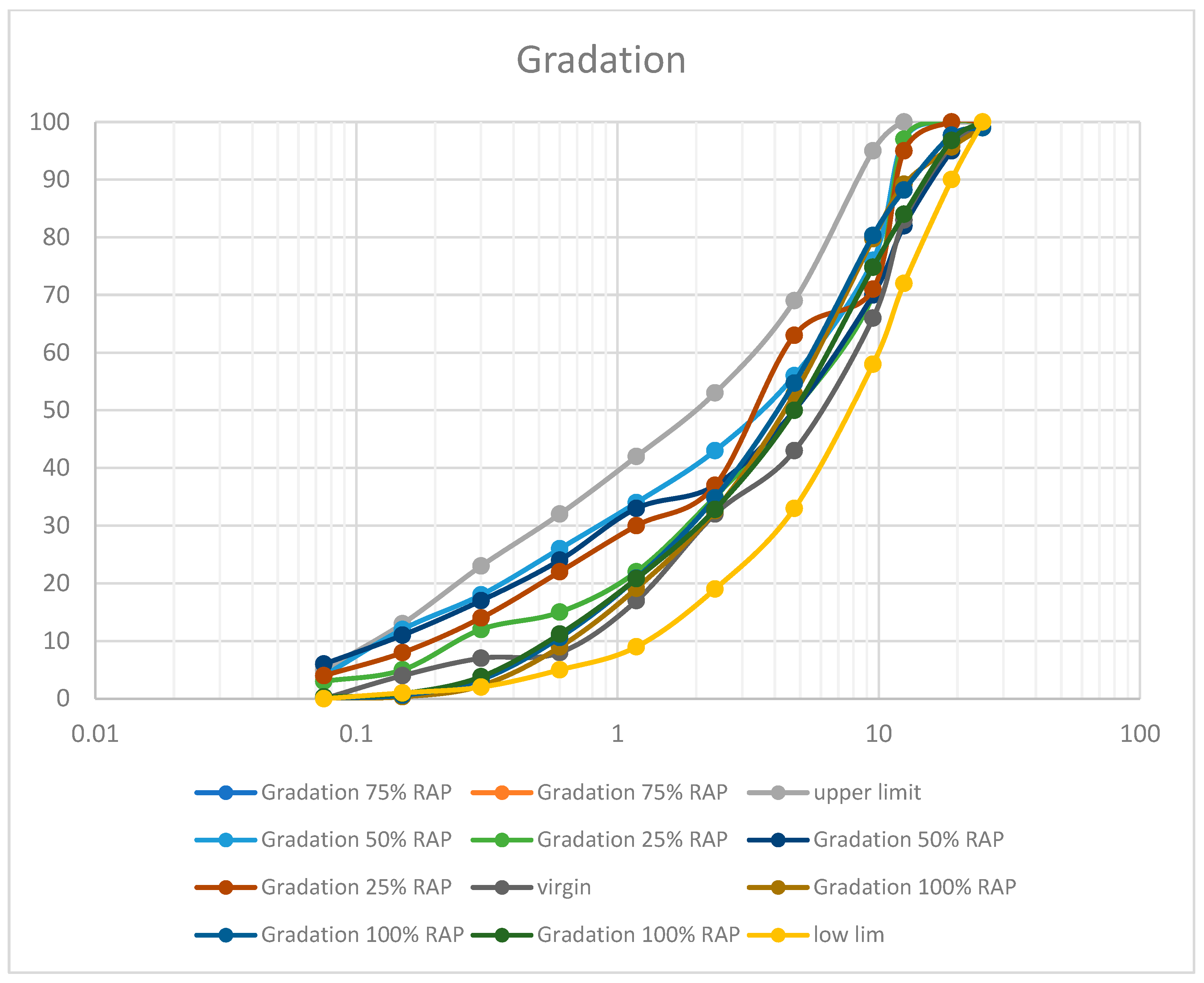
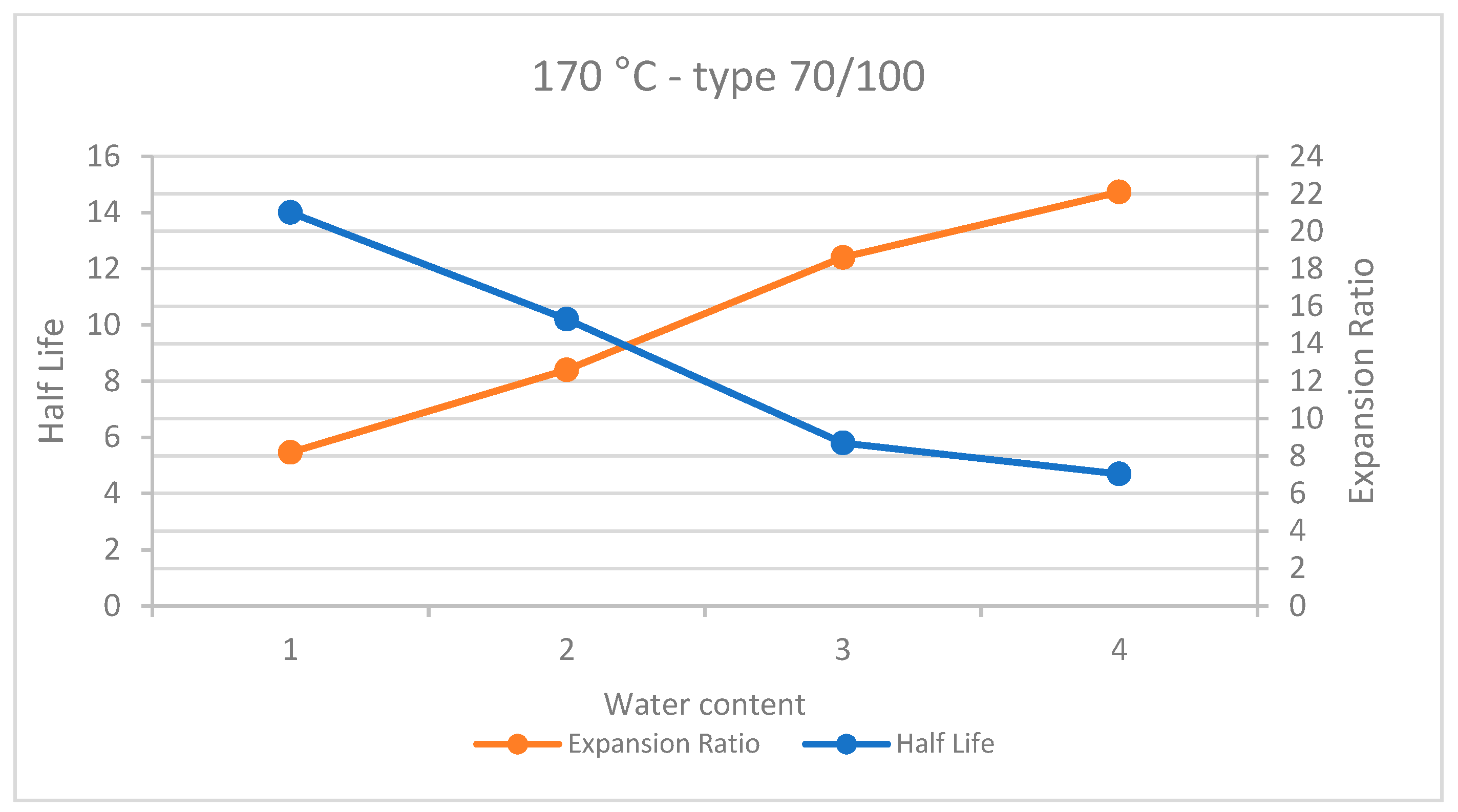
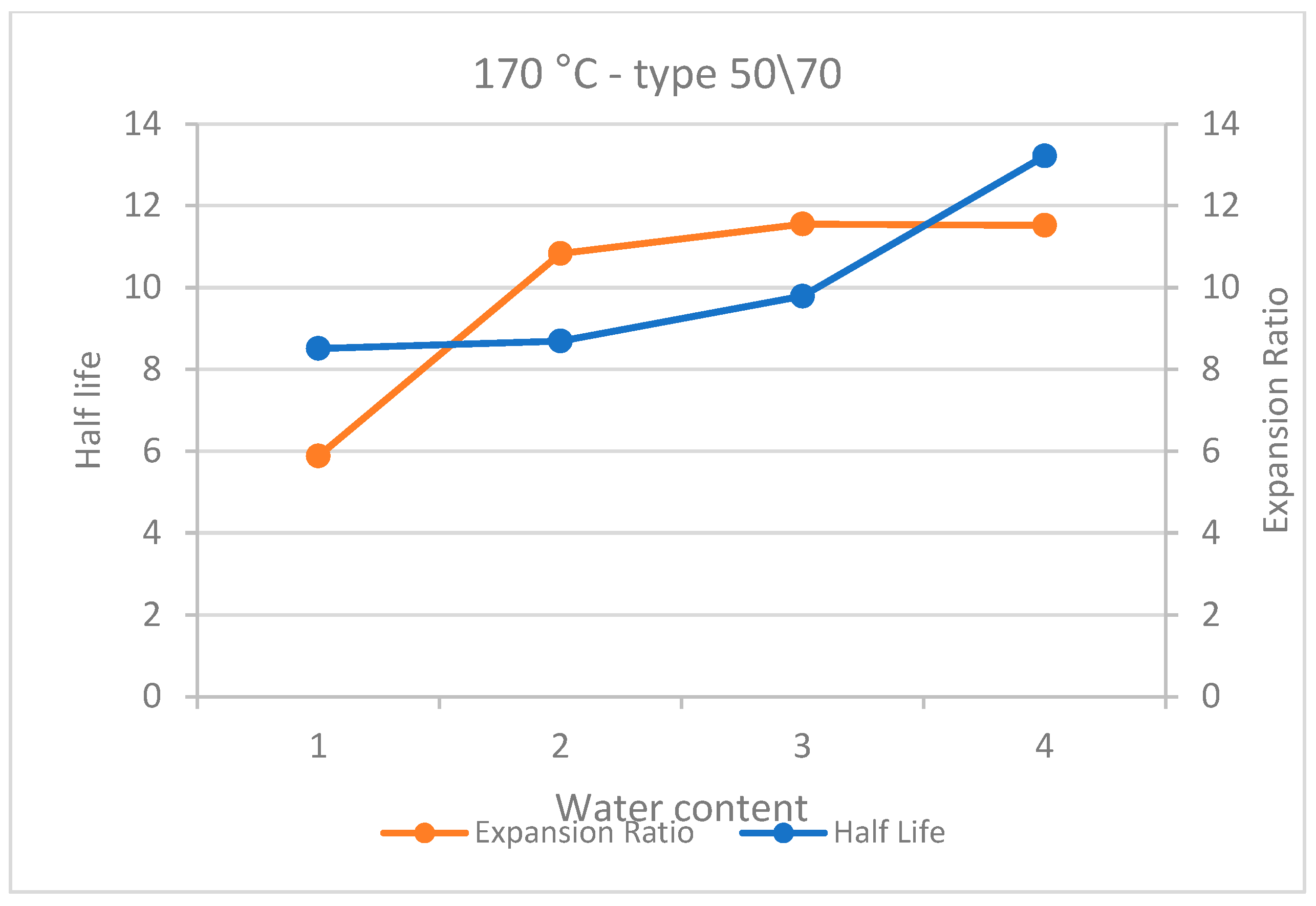
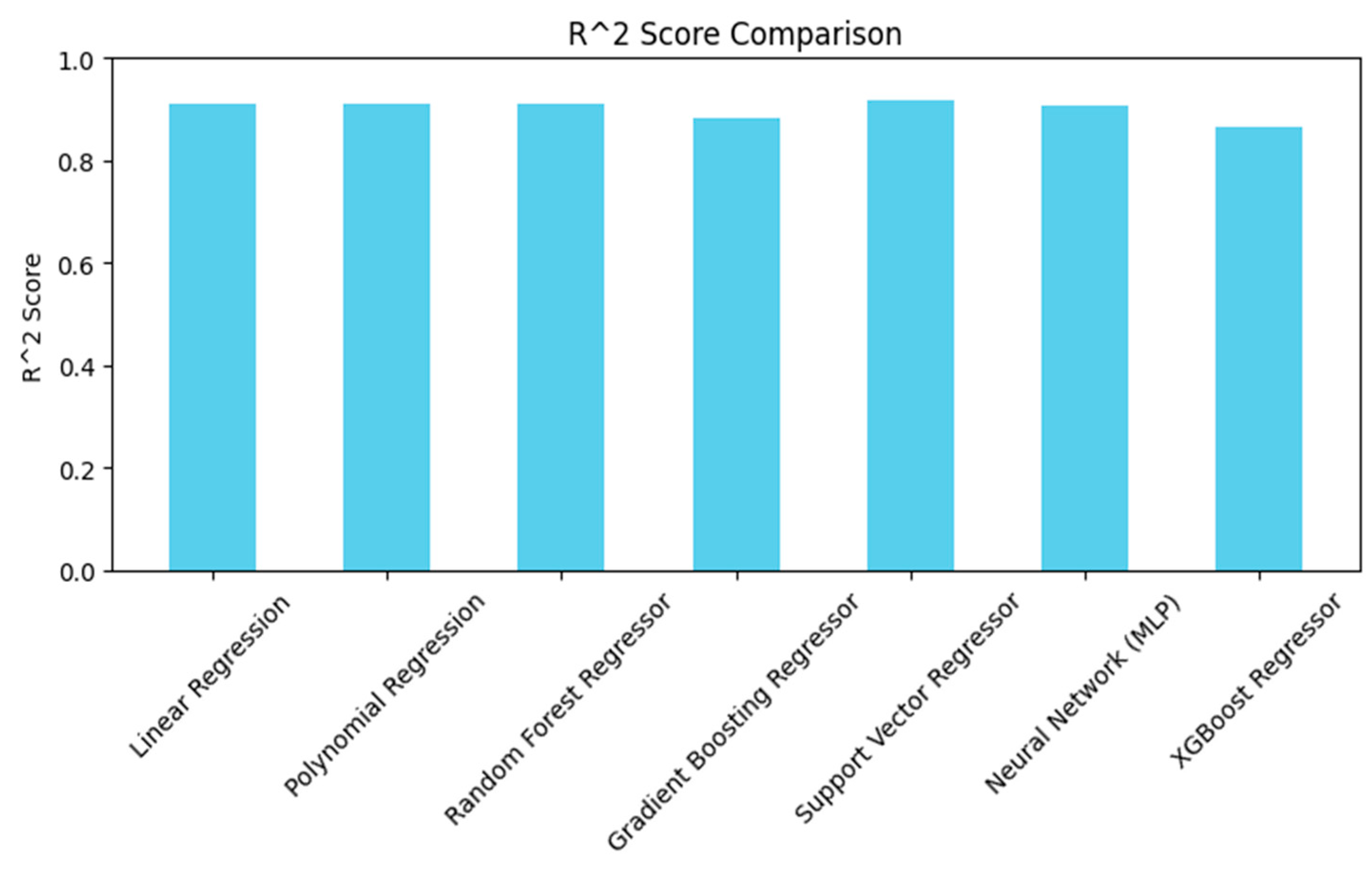
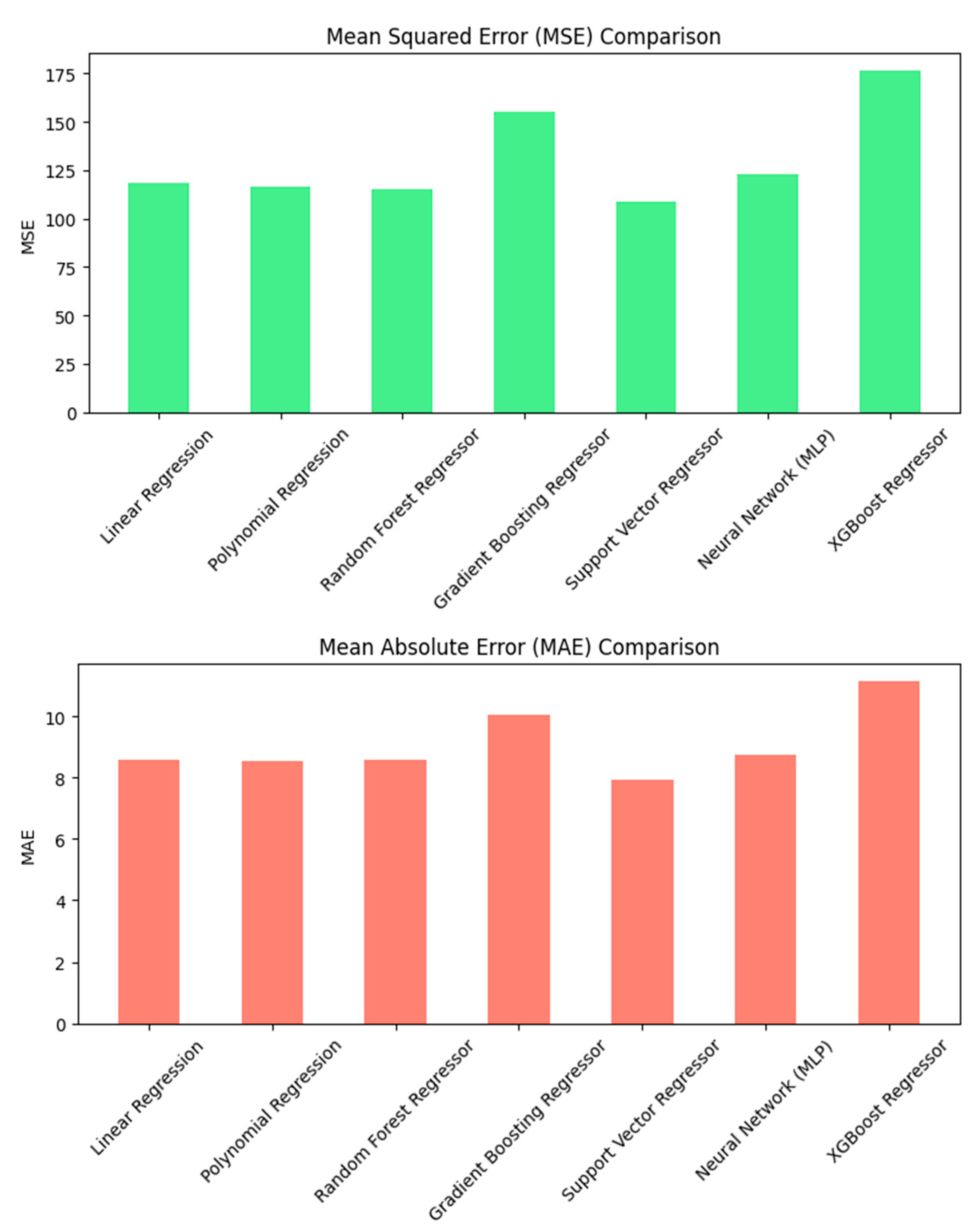





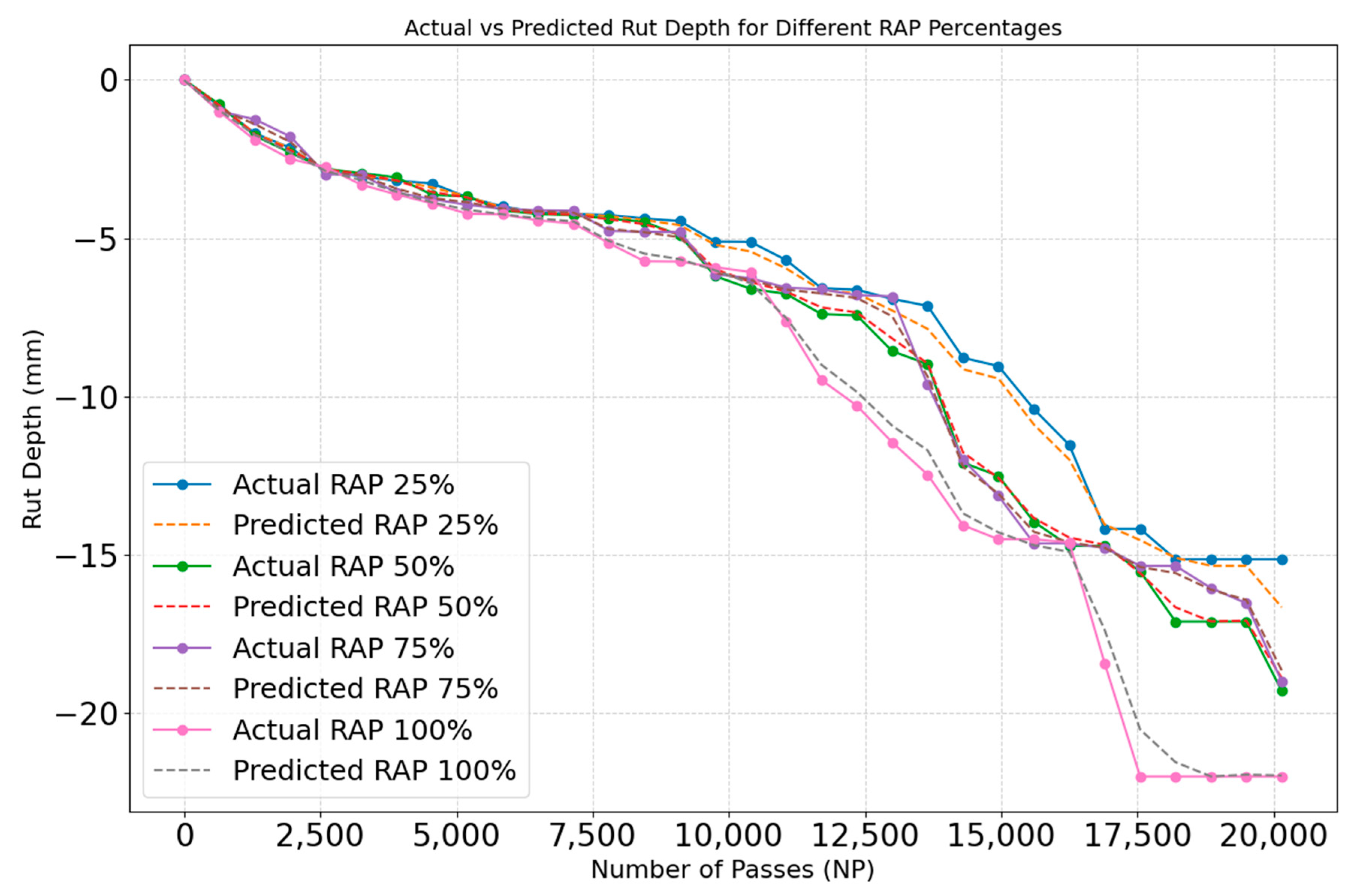

| Type | Penetration, 0.1 mm | EN 1426 | Loss on Heating, M% | EN 12591 | Softening Point, oC | EN 1427 | Flash Point, oC | ISO 2592 [18] |
|---|---|---|---|---|---|---|---|---|
| 70/100 | 82.6 | 70–100 | −0.4 | ≤0.8 | 46.6 | 43–51 | 238 | ≥230 |
| 50/70 | 61.2 | 50–70 | −0.2 | ≤0.5 | 48.9 | 46–54 | 249 | ≥230 |
Disclaimer/Publisher’s Note: The statements, opinions and data contained in all publications are solely those of the individual author(s) and contributor(s) and not of MDPI and/or the editor(s). MDPI and/or the editor(s) disclaim responsibility for any injury to people or property resulting from any ideas, methods, instructions or products referred to in the content. |
© 2025 by the authors. Licensee MDPI, Basel, Switzerland. This article is an open access article distributed under the terms and conditions of the Creative Commons Attribution (CC BY) license (https://creativecommons.org/licenses/by/4.0/).
Share and Cite
Saleh, A.; Gáspár, L. Optimizing Foamed Bitumen Mixtures: AI-Based Determination of Ideal RAP and FBC Percentages Using HWTT and ITS Data. Appl. Sci. 2025, 15, 3780. https://doi.org/10.3390/app15073780
Saleh A, Gáspár L. Optimizing Foamed Bitumen Mixtures: AI-Based Determination of Ideal RAP and FBC Percentages Using HWTT and ITS Data. Applied Sciences. 2025; 15(7):3780. https://doi.org/10.3390/app15073780
Chicago/Turabian StyleSaleh, Ali, and László Gáspár. 2025. "Optimizing Foamed Bitumen Mixtures: AI-Based Determination of Ideal RAP and FBC Percentages Using HWTT and ITS Data" Applied Sciences 15, no. 7: 3780. https://doi.org/10.3390/app15073780
APA StyleSaleh, A., & Gáspár, L. (2025). Optimizing Foamed Bitumen Mixtures: AI-Based Determination of Ideal RAP and FBC Percentages Using HWTT and ITS Data. Applied Sciences, 15(7), 3780. https://doi.org/10.3390/app15073780






